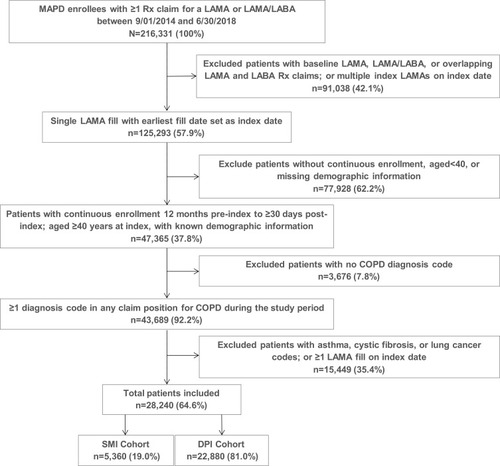Figures & data
Figure 1 Study design.

Figure 2 Patient identification and attrition.

Table 1 Baseline Patient Characteristics, by Inhaler Type, Before and After IPTW
Table 2 Baseline COPD-Related HRU and Acute COPD-Related Exacerbations
Figure 3 Follow-up HRU post-IPTW, by inhaler type: SMI (n=5360) and DPI (n=22,880), PPPM.


